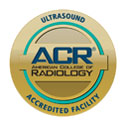
InterVasc is currently closed.
Uterine Fibroids (Uterine Fibroid Embolization)
Fibroid tumors are noncancerous (benign) growths that develop in the muscular wall of the uterus. While fibroids do not always cause symptoms, their size and location can lead to problems for some women, including pain and heavy bleeding. They typically improve after menopause when the level of estrogen, the female hormone that circulates in the blood decreases dramatically. However, menopauseal women who are taking supplemental estrogen (hormone replacement therapy) may not experience relief of symptoms.
Uterine fibroids are very common, although often they are very small and cause no problems. From 20 to 40 percent of women age 35 and older have uterine fibroids of a significant size. African-American women are at higher risk for fibroids: As many as 50 percent have fibroids of a significant size.
Uterine Fibroid Embolization is a minimally invasive procedure that an Interventional Radiologist makes a tiny incision in the groin and passes a small tube called a catheter through the artery. When the catheter reaches the uterine artery, the Interventional Radiologist slowly releases tiny plastic particles the size of grains of sand into the uterine arteries that supply blood to the fibroid tumor. This blocks the blood flow to the tumor, causing it to shrink.



